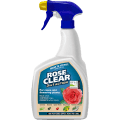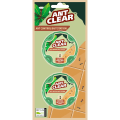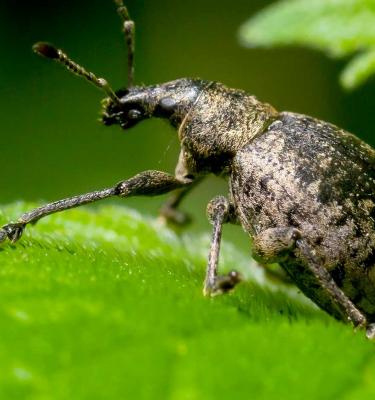

Vine Weevils Control
Vine weevils (Otiorhynchus sulcatus) are a devastating plant pest. Suddenly otherwise healthy-looking plants wilt and collapse and no amount of watering will help them recover. The reason? Vine weevil grubs have eaten all the roots.
Vine weevil grubs are particularly rampant in pots or other containers but they also attack plants in borders and beds, where dealing with them is far more difficult. The real danger is the underground grub. You can’t see what they’re doing until it’s too late.
How to identify vine weevils
Vine weevil eggs are laid in the plant’s roots - which are very difficult to see, allowing baby vine weevils to grow. They hatch into 10mm long ‘C’ shaped grubs with cream coloured bodies and brown heads. These unseen little vandals simply munch away at the root system until either they are caught or the plant first yellows then wilts and collapses through lack of sustenance.
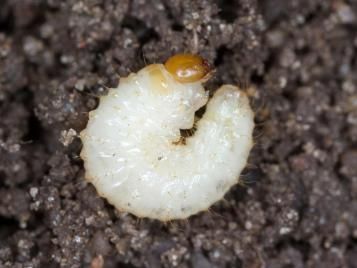
What does a vine weevil look like? Adult vine weevils are dusty grey/black flightless beetles. They are all female and each can lay up to 1,000 eggs in a season. Eggs are laid during the summer and early autumn ready to become grubs in spring the following year.
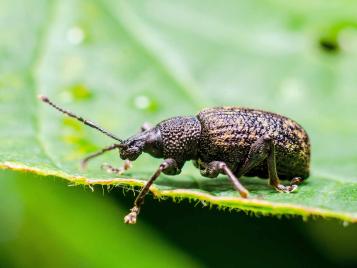
Vine weevil damage and symptoms
Adult vine weevils damage plants by eating irregular notches from the edges of leaves. Vine weevil larvae or grubs munch away at the root system which slows the growth of the plant, then the leaves wilt and the plant collapses through lack of nutrients. This damage is most evident from autumn to spring.
Vine weevil control and treatment
How to get rid of adult vine weevils
- It is best to physically remove them. Collect them at night by torchlight, whilst they are feeding. Place a newspaper, a tray or an upturned umbrella underneath the plant and shake the plant to dislodge the flightless beetles. Pick up the vine weevils, squash and bin them.
- Use a specially formulated vine weevil chemical control on ornamental plants in pots or containers. Spray the plants with a systemic and contact insecticide* at dusk on mild evenings.
How to get rid of vine weevil grubs
- Introduce pathogenic vine weevil nematodes as a biological control. Steinernema kraussei are little parasitic worms which will do no harm to the plant but which will kill the vine weevil larvae. As with most biological controls the conditions need to be absolutely right for the treatment to work. They are best watered into lighter, moist soil at temperatures above 5°C in late summer, before the grubs have grown large enough to cause serious damage.
- To get rid of vine weevil grubs in pots or containers, drench the compost with a systemic and contact insecticide* which will kill off the grubs and interrupt the life cycle of the pest.
*Vine weevil chemical control cannot be used to treat edible plants.
How to prevent vine weevils
- Before bringing any tender plants in containers into the greenhouse or a conservatory check the compost carefully and if you find white grubs in the pots dispose of the compost (do not use it again), wash the pot and rinse the roots of the plant thoroughly before replanting.
- Encourage the natural predators of the adult vine weevil into your garden. These include birds, frogs, toads, shrews and hedgehogs.
- Create a barrier around your pots such as parcel tape smeared with non-drying insect glue. Because the adult Vine Weevil cannot fly this should trap the adult females before they lay their eggs. The best time to do this is in August and September outdoors or all year round in the greenhouse.
- Keep checking your plants for any sign of vine weevils so you can take action before a damaging population develops. The plants that vine weevils seem to favour include Begonias, Bergenias, Cyclamen, Fuchsias, Heuchera, Polyanthus, Primulas, Sedums, Strawberries, Succulents and Saxifrages. It is worth taking the plants out of the pot and checking the rootball thoroughly.


